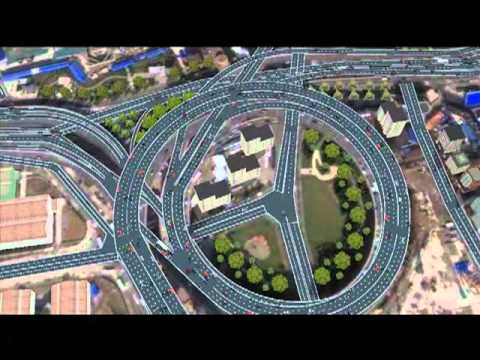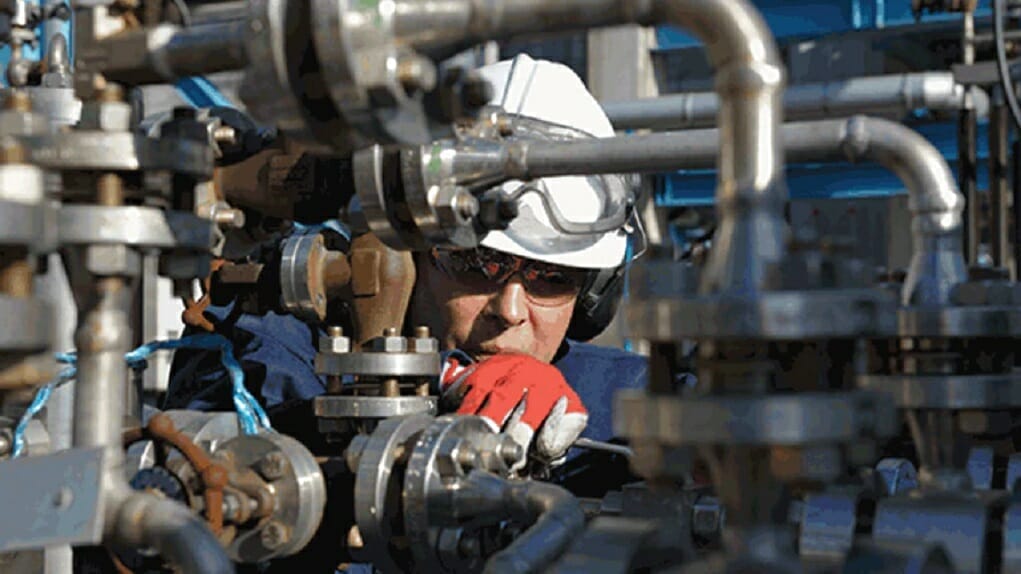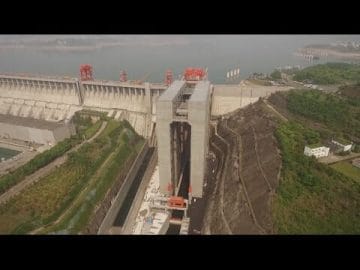The World’s Largest Spiral Bridge is an Engineering Marvel
In Central Shanghai, there is a bridge called the Nanpu Bridge over the Huangpu River. What’s so special about the bridge? Well, it is the largest spiral bridge in the world… an Engineering Marvel. The spiral approaches of the Nanpu Bridge are a major connection between the Lu Jiabing Road and the Zhongshan South Road.
Source: Quadstone Paramics
In addition to being an architectural and engineering marvel, the bridge is a major contributor to the development that is going on in the Pudong District. It is also a major tourist attraction and if you ever visit Shanghai, you will be asked by locals to be there by the bridge (even if you do not have any purpose of crossing it). The bridge looks great by the moonlight.
It is one of the main bridges and is with a circular design. The design reduces the gradient of the approach to the bridge and also keeps land use to minimal. The total length of the bridge is around 8,346 meters. If you are with a creative bend of mind, you could imagine the bridge as a dragon that’s lying across the Huangpu River. The ‘head’ and ‘tail’ of the dragon seem to be spiral in shape and design, linking the old cities of Pudong development zone and Puxi.

The bridge was completed in the year 1991. Before, if you have to travel between Pudong and Puxi, you have to take the ferry service on the Huangpu River. You will be amazed to know that there are around 14, 000 to 17,000 vehicles that are crossing the bridge each day. And, in the year 2006, the number of vehicles crossing each day through the Nanpu Bridge was increased to 120, 000 per day. That bridge served its purpose pretty much.
The Nanpu Bridge, an engineering marvel is the 4th longest cable-stayed bridge in the world. Go for a memorable ride on the three spirals of the bridge that fall on the Puxi side
Construction
Construction on the Nanpu Bridge project began on December 15, 1988 and actual construction was finished by June 20 1991. Deng Xiaoping personally inscribed the name of the bridge on a main girder. The opening ceremony was held on November 19 1991 and open to traffic on December 1, 1991, becoming the first bridge over the Huangpu River in central Shanghai, and the fourth biggest cable-stayed bridge in the world.

Mainly financed by the Asian Development Bank, the total cost for this project was CNY 820 million. Shanghai Jiushi Corporation was responsible for raising capital and financial management for the whole project.
Nanpu Bridge was co-designed by the Shanghai Municipal Engineering Design Institute, and the Tongji Architectural Design and Research Institute. The Shanghai Municipal Engineering Institute and Shanghai Institute of Building Research supervised 18 corporations involved in this project.
The successful completion of Nanpu Bridge stimulated the economic development of Shanghai and also laid a good foundation for the subsequent construction of Yangpu Bridge and Xupu Bridge.

The overall length of Nanpu Bridge is 8,346 m (9,127 yards). The main bridge is 846 m (925 yards) and the total length of the elevated circular approaches is 7500 m (8,202 yards) with 423 m (462 yards) for the span. With a bridge height of 46 m (50 yards) over the water, ships of up to 55 thousand tons are able to successfully navigate below the bridge.
The main bridge is a cable-stayed bridge with two main towers and double cable planes. The towers stand on each bank and are built of reinforced concrete, 150 m (492 feet) high, and resembling the letter ‘H’. Each side of the bridge has 22 pairs of steel cable linking the girder cable plane, which look like 2 fans from a distance.
The main bridge is a composite structure of steel and concrete. The lower layer of the bridge deck is made of a large ‘beam’ frame while the upper layer is reinforced with concrete. The steel deck and the bridge surfacewere welded with electronic welding, and concrete poured into the junction. This composite beam structure was first developed in Chinese bridge construction.


















